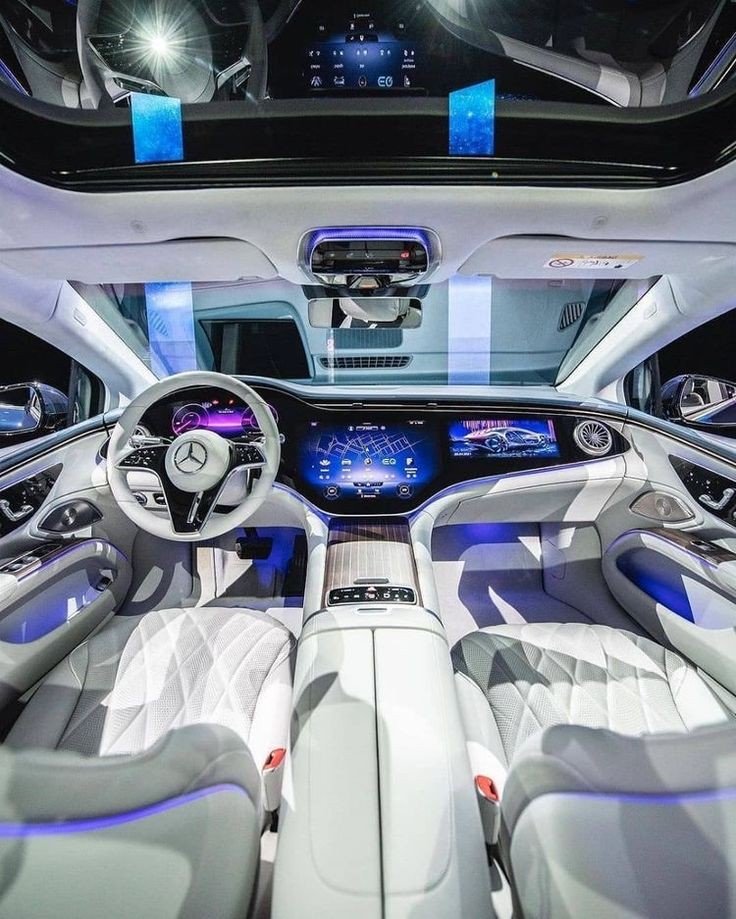
As the automotive industry heads into the latter half of 2024, the sales figures for August have come under scrutiny from analysts and investors alike. According to a report from domestic brokerage Nuvama, the month of August is expected to yield mixed results across different vehicle segments. While the two-wheeler (2W) and tractor segments are projected to see growth, passenger vehicles (PV) and commercial vehicles (CV) may witness declines. This article provides an in-depth analysis of the expected sales performance across these segments, the factors driving these trends, and the broader implications for the Indian automotive market.
Overview of the Indian Automotive Market in August 2024
The Indian automotive market, one of the largest in the world, is a vital component of the country’s economy. The sector encompasses a wide range of vehicles, from two-wheelers and passenger cars to commercial vehicles and tractors. Each segment responds to different economic drivers, including consumer sentiment, rural demand, monsoon conditions, and macroeconomic factors such as inflation and interest rates.
For August 2024, Nuvama’s analysis indicates a divergence in performance across the major vehicle segments. The report suggests that while some segments are poised for growth, others may face headwinds due to high base effects, shifting consumer preferences, and market-specific challenges.
Two-Wheeler (2W) Segment: Growth Driven by Rural Demand
The two-wheeler segment, a critical part of India’s automotive market, is expected to show robust growth in August 2024. Analysts at Nuvama project industry volumes to grow by approximately 8% year-on-year (Y-o-Y) in the domestic market, driven largely by strong rural demand and steady urban demand.
Key Drivers of Two-Wheeler Growth
- Rural Demand: The monsoon season plays a pivotal role in influencing rural demand for two-wheelers. In August 2024, normal monsoon conditions have led to improved sentiments among rural consumers, driving higher sales. Two-wheelers are often the preferred mode of transport in rural areas, and favorable agricultural conditions typically translate into increased purchasing power among farmers, leading to higher sales of two-wheelers.
- Urban Demand: Urban demand for two-wheelers remains steady, supported by the increasing need for personal mobility in the face of rising urbanization and the gradual recovery of economic activities post-pandemic. The continued preference for affordable, fuel-efficient transportation options among middle-class urban consumers is also a contributing factor.
- Festive Season Inventory Build-Up: As the festive season approaches, dealers have begun building up inventory to meet the expected surge in demand. This has led to an increase in wholesale figures, which may outpace retail sales in August. The festive season, which includes festivals such as Navratri and Diwali, is traditionally a peak period for vehicle sales in India.
Performance of Major OEMs in the Two-Wheeler Segment
Within the two-wheeler segment, mass-market original equipment manufacturers (OEMs) such as Honda, Hero MotoCorp, Bajaj Auto, and TVS are anticipated to perform well. Nuvama forecasts a 10% volume growth for TVS Motor Company, reaching 380,000 units. Bajaj Auto is expected to see a 7% increase in volumes to 365,000 units, while Hero MotoCorp, the market leader, is projected to achieve a 4% growth in sales, totaling 510,000 units.
In contrast, Eicher Motors, which owns the Royal Enfield brand, is expected to show flat performance with sales remaining steady at 77,500 units. Royal Enfield, known for its premium motorcycles, has a more niche market compared to mass-market brands. The flat performance can be attributed to the company’s limited product offerings and higher price points, which may not see the same level of demand as more affordable two-wheelers during periods of economic uncertainty.
Passenger Vehicle (PV) Segment: A Mixed Bag with Declining Volumes
The passenger vehicle segment is expected to face challenges in August 2024, with overall volumes projected to decline by around 3% Y-o-Y. This muted performance is attributed to a high base effect from the previous year, as the festive season (Onam) began earlier in 2023, leading to stronger sales during the same period last year.
Key Drivers of the Passenger Vehicle Segment’s Performance
- High Base Effect: The high base from the previous year is a significant factor contributing to the expected decline in PV sales. In August 2023, the onset of the Onam festival in Kerala, a key market for passenger vehicles, boosted sales figures. This year, with the festival starting later, the comparable sales figures are likely to be lower.
- Market Sentiment and Consumer Preferences: Consumer sentiment in the PV segment is influenced by a variety of factors, including inflation, interest rates, and fuel prices. While the Indian economy is gradually recovering, higher interest rates and elevated vehicle prices due to inflationary pressures may deter some consumers from making new vehicle purchases.
- Vehicle Discounts and Promotions: Despite the challenges, higher vehicle discounts and promotional offers compared to last year may help mitigate the decline in sales. OEMs are likely to offer attractive financing options and discounts to stimulate demand, particularly as they prepare for the upcoming festive season.
Performance of Major OEMs in the Passenger Vehicle Segment
The performance of individual OEMs within the passenger vehicle segment is expected to vary. Mahindra & Mahindra (M&M) is projected to experience robust growth of 13%, making it a standout performer in the PV segment. M&M’s success can be attributed to its strong portfolio of SUVs and its ability to tap into the growing demand for premium and utility vehicles in both urban and rural markets.
In contrast, Maruti Suzuki, the market leader in the passenger vehicle segment, is expected to face a 6% decline in volumes, with sales projected at 152,500 units. The decline is primarily due to the high base effect from the previous year, as well as the company’s focus on the small car segment, which may be more sensitive to economic fluctuations.
Tata Motors is expected to see a modest 2% increase in PV volumes, reaching 44,850 units. The company’s focus on electric vehicles (EVs) and its expanding portfolio of SUVs and compact cars have helped it maintain steady growth in a challenging market environment.
Commercial Vehicle (CV) Segment: A Slight Decline Amid High Base Effect
The commercial vehicle segment, which includes trucks, buses, and other large vehicles, is expected to witness a slight decline of around 4% Y-o-Y in August 2024. The decline is largely attributed to a high base effect from the previous year, particularly in the cargo vehicle segment.
Key Drivers of the Commercial Vehicle Segment’s Performance
- High Base Effect: Similar to the passenger vehicle segment, the commercial vehicle segment is also affected by a high base effect. In 2023, the demand for cargo vehicles was particularly strong, driven by the recovery in economic activities post-pandemic and the need for increased logistics and transportation services.
- Freight Availability: Despite the expected decline, there are positive indicators for the commercial vehicle segment. E-way bill generation, a key metric for tracking freight movement, has increased compared to last year, suggesting better freight availability and potentially supporting demand for commercial vehicles in the coming months.
- Economic Activity and Infrastructure Development: The overall health of the commercial vehicle segment is closely linked to economic activity and infrastructure development. While economic growth remains steady, the pace of infrastructure projects and industrial activities will be crucial in determining the demand for commercial vehicles.
Performance of Major OEMs in the Commercial Vehicle Segment
Within the commercial vehicle segment, Nuvama projects a 7% increase in total volume for Eicher Motors-VECV (Volvo Eicher Commercial Vehicles) to 6,900 units. This growth is likely driven by the company’s strong presence in the medium and heavy commercial vehicle (M&HCV) segment, as well as its focus on delivering fuel-efficient and reliable vehicles.
Ashok Leyland, another major player in the commercial vehicle segment, is expected to see flat growth with sales holding steady at 15,600 units. The company’s diversified portfolio of trucks and buses, along with its focus on innovation and technology, has helped it maintain a stable position in the market.
Tata Motors, the largest commercial vehicle manufacturer in India, is expected to face a 4% decline in CV volumes, with sales projected at 30,650 units. The decline may be attributed to the high base effect and the company’s exposure to the cargo vehicle segment, which is more sensitive to economic cycles.
Tractor Segment: Marginal Growth Supported by Favourable Conditions
The tractor segment, which plays a crucial role in India’s agricultural sector, is expected to see marginal growth in August 2024. Nuvama analysts project industry volumes to grow by about 4% Y-o-Y, supported by improved farmer sentiments due to normal monsoon conditions and favourable terms of trade.
Key Drivers of Tractor Segment Growth
- Monsoon Conditions: The performance of the tractor segment is closely linked to the monsoon season, which determines agricultural output and, by extension, the demand for tractors. In August 2024, normal monsoon conditions have led to improved farmer sentiments, driving higher sales of tractors.
- Favourable Terms of Trade: Favourable terms of trade, where output inflation exceeds input inflation, have also contributed to positive growth in the tractor segment. This means that farmers are receiving higher prices for their produce while their input costs remain relatively stable, improving their purchasing power and ability to invest in new tractors.
- Government Support and Subsidies: Government initiatives aimed at supporting the agricultural sector, including subsidies and financing options for tractor purchases, continue to play a vital role in sustaining demand in this segment.
Performance of Major OEMs in the Tractor Segment
Mahindra-Farm, a leading player in the tractor segment, is expected to achieve 8% volume growth, reaching 23,400 units in August 2024. The company’s strong brand presence, extensive distribution network, and focus on innovation have helped it maintain its leadership position in the Indian tractor market.
Escorts, another major player in the tractor segment, is projected to see a modest 2% increase in volumes, with sales reaching 5,700 units. The company’s focus on providing technologically advanced and efficient tractors has resonated well with farmers, particularly in regions with high agricultural activity.
Implications for Investors and the Auto Industry
The mixed results projected for August 2024 highlight the complexities and challenges facing the Indian automotive industry. While certain segments such as two-wheelers and tractors are poised for growth, others like passenger vehicles and commercial vehicles may face headwinds due to high base effects, economic factors, and shifting consumer preferences.
Stock Market Performance
The stock market performance of major OEMs in the automotive sector has reflected these mixed expectations. Over the past month, shares of Mahindra & Mahindra (M&M) have dropped by 6%, while Escorts has seen a decline of over 7%. In contrast, Bajaj Auto has bucked the trend with a rise of over 10%, according to data from the Bombay Stock Exchange (BSE).
The differing stock performances underscore the importance of segment-specific factors and the need for investors to take a nuanced approach when assessing opportunities in the automotive sector. Companies with strong fundamentals, diversified portfolios, and the ability to navigate market challenges are likely to be better positioned for long-term success.
Strategic Considerations for OEMs
For OEMs, the key to navigating the current market environment lies in understanding and responding to the specific needs of each segment. This includes leveraging strengths in high-growth areas such as two-wheelers and tractors while addressing challenges in segments like passenger vehicles and commercial vehicles.
Innovation, customer-centricity, and operational efficiency will be critical for OEMs as they seek to maintain competitiveness and drive growth in a rapidly evolving market. Additionally, the ability to adapt to changing consumer preferences, particularly in response to economic conditions and technological advancements, will play a crucial role in shaping the future of the automotive industry.
Conclusion
The August 2024 auto sales figures reflect a complex and dynamic market landscape, with varied performance across different vehicle segments. While the two-wheeler and tractor segments are expected to see growth driven by strong rural demand and favorable conditions, the passenger vehicle and commercial vehicle segments may face challenges due to high base effects and shifting market dynamics.
For investors, understanding the factors driving these trends and their implications for individual OEMs is essential for making informed decisions in the automotive sector. As the industry continues to evolve, companies that can successfully navigate these challenges and capitalize on growth opportunities are likely to emerge as leaders in the Indian automotive market.
ALSO READ: The Top Features to Look for in a New SUV







